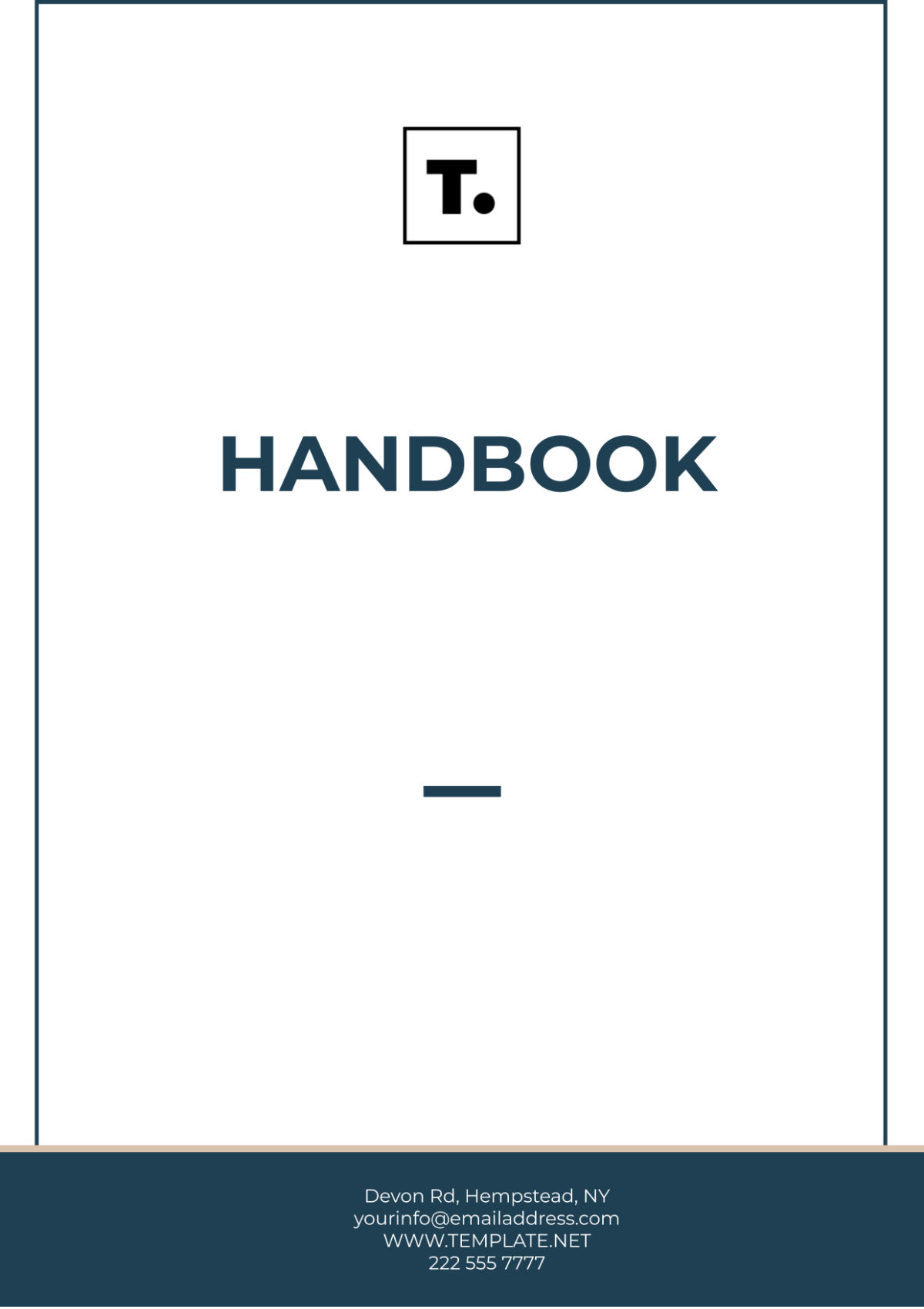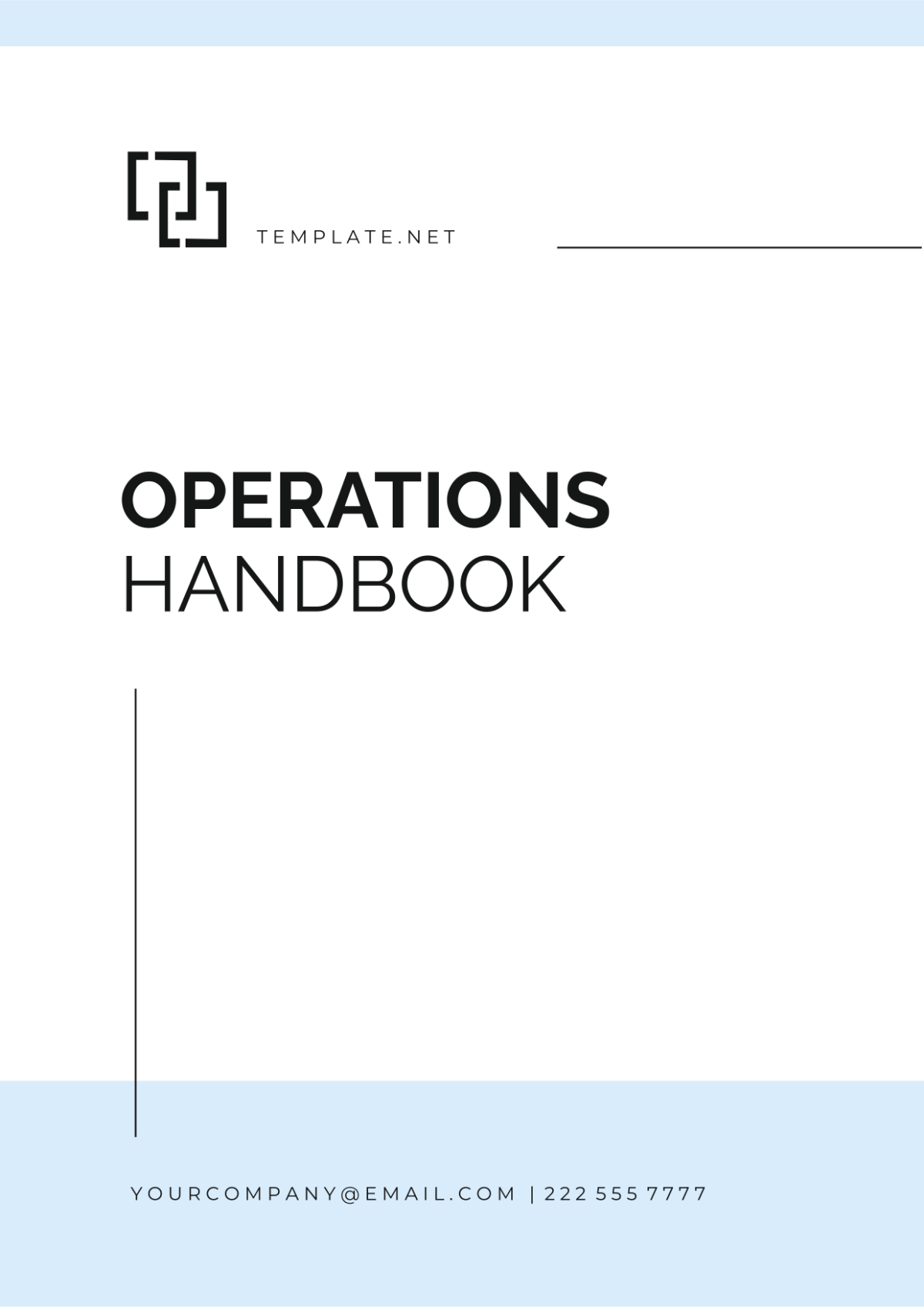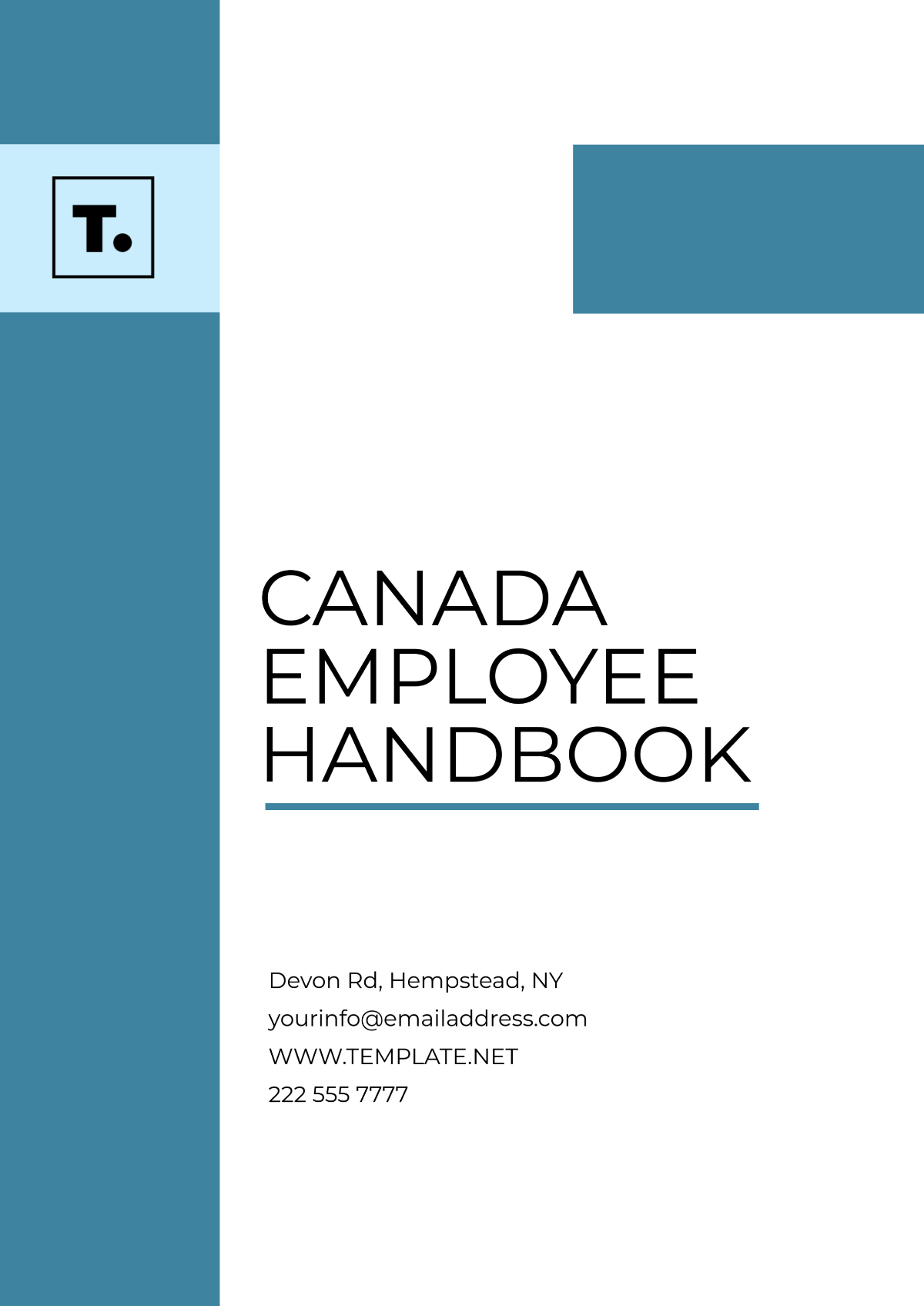Agriculture Labor Conflict Resolution Handbook
I. Introduction
A. Purpose of the Handbook
The Agriculture Labor Conflict Resolution Handbook is an essential resource for [Your Company Name] aimed at fostering a harmonious workplace environment. By providing comprehensive guidelines and strategies for managing and resolving conflicts, this handbook aims to enhance employee satisfaction, improve productivity, and maintain a positive organizational culture.
B. Scope
This handbook covers a wide range of labor conflicts that may arise within [Your Company Name], focusing specifically on the agricultural sector. It addresses conflicts such as interpersonal disputes, organizational disagreements, and contractual issues, offering tailored approaches to each type of conflict scenario.
C. Definitions
Conflict: A clash or disagreement between individuals or groups with differing interests, values, or objectives.
Conflict Resolution: The process of addressing and settling disputes or disagreements in a constructive and mutually satisfactory manner.
Mediation: A method of conflict resolution involving a neutral third party who facilitates communication and negotiation between conflicting parties.
Arbitration: A process where disputes are resolved by an impartial arbitrator who makes a final and binding decision after hearing both sides.
Negotiation: A method of conflict resolution where parties involved in a dispute discuss and reach a mutually acceptable agreement through compromise and discussion.
II. Understanding Agricultural Labor Conflicts
A. Types of Conflicts
1. Interpersonal Conflicts
Interpersonal conflicts in agricultural settings often arise due to differences in personality, communication styles, or personal values among employees. For example, a conflict may occur between two farm workers over the division of labor responsibilities, which can escalate if not addressed promptly. Understanding the underlying causes of interpersonal conflicts helps [Your Company Name] implement targeted strategies to foster better team dynamics and cooperation.
2. Organizational Conflicts
Organizational conflicts typically involve disputes between different departments, teams, or hierarchical levels within [Your Company Name]. These conflicts may stem from conflicting goals, competition for resources, or differing opinions on strategic decisions. For instance, disagreements between the production team and the quality control team regarding production schedules or resource allocation can impact overall operational efficiency. Addressing organizational conflicts requires clear communication, collaborative problem-solving, and effective leadership to align goals and resolve disputes constructively.
3. Contractual Conflicts
Contractual conflicts arise when there are disagreements or misunderstandings regarding the terms and conditions outlined in employment contracts, agreements, or policies within [Your Company Name]. These conflicts may involve disputes over wages, benefits, working hours, job responsibilities, or contractual obligations. Resolving contractual conflicts requires careful review and interpretation of contractual terms, open dialogue between parties, and adherence to legal or regulatory requirements to ensure fair and equitable outcomes for all parties involved.
B. Causes of Conflicts
1. Communication Breakdown
Effective communication is fundamental to preventing and resolving conflicts in agricultural workplaces. Misunderstandings, unclear instructions, or inadequate information sharing can lead to confusion, frustration, and conflict among employees. For example, ambiguous directives from management regarding task assignments or operational procedures can result in errors and subsequent disputes among team members. By promoting clear, open communication channels and encouraging active listening, [Your Company Name] can mitigate communication breakdowns and foster a collaborative work environment where issues can be addressed proactively.
2. Resource Allocation
Limited availability or competition for resources such as equipment, machinery, tools, or budgetary allocations can trigger conflicts within agricultural operations. For instance, conflicts may arise between different farm departments or teams vying for access to essential resources needed to carry out their tasks efficiently. Effective resource management, strategic planning, and transparent allocation processes are crucial to minimizing conflicts over resource distribution. By implementing fair resource allocation policies, [Your Company Name] can mitigate potential disputes and ensure equitable access to resources, thereby promoting teamwork and operational effectiveness.
3. Cultural Differences
Cultural diversity in agricultural workplaces can enrich organizational perspectives and innovation but may also give rise to conflicts stemming from differing cultural norms, values, or communication styles among employees. For example, cultural misunderstandings or language barriers between migrant workers and local staff members may lead to misinterpretations or conflicts over work practices, interpersonal interactions, or decision-making processes. Embracing cultural diversity, promoting cultural awareness training, and fostering inclusive communication practices are essential to bridging cultural gaps and promoting mutual respect among employees. By celebrating cultural diversity and creating a culturally inclusive workplace environment, [Your Company Name] can harness the unique strengths and talents of its workforce while minimizing potential conflicts arising from cultural differences.
III. Conflict Resolution Framework
A. Principles of Conflict Resolution
1. Fairness
Fairness is a foundational principle of conflict resolution that emphasizes impartiality, equity, and justice in addressing disputes or disagreements within [Your Company Name]. Fair conflict resolution processes ensure that all parties involved are treated with respect, their concerns are heard, and decisions are made based on objective criteria and ethical standards. By upholding fairness in conflict resolution practices, [Your Company Name] can build trust, enhance employee morale, and foster a positive organizational culture conducive to collaborative problem-solving and mutual understanding.
2. Transparency
Transparency in conflict resolution involves openness, clarity, and honesty in communication throughout the dispute resolution process within [Your Company Name]. Transparent conflict resolution practices ensure that relevant information is shared openly with all parties involved, decisions are made transparently, and the rationale behind decisions is clearly communicated. By promoting transparency, [Your Company Name] can enhance accountability, mitigate misunderstandings, and cultivate an environment of trust and integrity where conflicts can be addressed effectively and resolutions are perceived as fair and equitable.
3. Respect
Respectful communication and behavior are essential principles of conflict resolution that emphasize valuing diversity, acknowledging differences, and demonstrating empathy towards others within [Your Company Name]. Respectful conflict resolution practices involve listening actively to differing perspectives, refraining from personal attacks or derogatory remarks, and treating all individuals involved with dignity and professionalism. By fostering a culture of respect, [Your Company Name] can promote positive interpersonal relationships, reduce conflict escalation, and create a supportive work environment where mutual respect and cooperation thrive.
B. Steps in Conflict Resolution
1. Identification
The first step in conflict resolution is identifying the existence of a conflict within [Your Company Name]. This involves recognizing signs or indicators of conflict, such as increased tension among team members, decreased productivity, absenteeism, or formal complaints from employees. Effective conflict identification requires proactive monitoring, open communication channels, and a willingness to address emerging issues promptly to prevent escalation. By promptly identifying conflicts, [Your Company Name] can initiate timely intervention and minimize potential negative impacts on workplace morale and productivity.
2. Assessment
Once a conflict is identified, it is essential to conduct a thorough assessment to understand the underlying causes, dynamics, and potential implications of the conflict within [Your Company Name]. Conflict assessment involves gathering relevant information, listening to the perspectives of all parties involved, and analyzing the root causes contributing to the dispute. This step may include conducting interviews, reviewing documentation, or consulting with relevant stakeholders to gain a comprehensive understanding of the conflict's context and complexity. By conducting a systematic assessment, [Your Company Name] can develop informed strategies and targeted interventions tailored to address the specific issues contributing to the conflict effectively.
3. Resolution
The final step in conflict resolution is implementing a resolution strategy designed to address and resolve the conflict within [Your Company Name] in a constructive and mutually satisfactory manner. Conflict resolution strategies may include negotiation, mediation, arbitration, or a combination of approaches depending on the nature, severity, and preferences of the parties involved. The goal of conflict resolution is to facilitate open dialogue, explore potential solutions, and reach a consensus or agreement that meets the interests and needs of all parties while promoting reconciliation and restoring positive working relationships. By implementing effective conflict resolution strategies, [Your Company Name] can foster a culture of collaboration, enhance organizational resilience, and create opportunities for growth and learning from conflict experiences.
IV. Preventive Measures
A. Training and Development
1. Communication Skills
Effective communication skills are essential for preventing misunderstandings and resolving conflicts within [Your Company Name]. Communication training programs can equip employees with the skills and techniques necessary to articulate their ideas clearly, listen actively to others, and engage in constructive dialogue. Training initiatives may include workshops, seminars, or role-playing exercises designed to enhance communication competencies and promote a culture of open communication within teams and across organizational levels. By investing in communication skills development, [Your Company Name] can empower employees to navigate interpersonal interactions effectively, mitigate potential conflict triggers, and contribute to a collaborative and harmonious work environment.
2. Cultural Sensitivity
Cultural sensitivity training plays a crucial role in promoting understanding, respect, and inclusivity among employees with diverse cultural backgrounds within [Your Company Name]. Cultural sensitivity training initiatives can raise awareness of cultural differences, norms, and values, enabling employees to appreciate and embrace diversity while minimizing the risk of cultural misunderstandings or conflicts. Training sessions may cover topics such as cultural awareness, cross-cultural communication strategies, and strategies for fostering inclusive workplace practices. By fostering cultural sensitivity, [Your Company Name] can cultivate a culturally competent workforce, strengthen intercultural relationships, and promote a supportive organizational climate where diverse perspectives are valued and respected.
B. Policies and Procedures
1. Code of Conduct
A comprehensive code of conduct sets clear expectations, guidelines, and standards of behavior for employees within [Your Company Name], promoting professionalism, respect, and ethical conduct in all workplace interactions. A well-defined code of conduct articulates acceptable and unacceptable behaviors, outlines disciplinary measures for violations, and reinforces [Your Company Name]'s commitment to maintaining a respectful and inclusive work environment. By communicating clear expectations and ethical standards, a code of conduct serves as a proactive measure to prevent misconduct, minimize potential conflicts, and uphold organizational values and principles.
2. Grievance Procedures
Establishing formal grievance procedures provides employees within [Your Company Name] with a structured mechanism to raise concerns, address grievances, and seek resolution in a fair and impartial manner. Grievance procedures outline the steps, timelines, and responsibilities involved in reporting, investigating, and resolving workplace disputes or complaints. These procedures ensure transparency, procedural fairness, and due process in handling conflict-related issues, promoting trust, and confidence among employees. By implementing accessible and equitable grievance procedures, [Your Company Name] demonstrates its commitment to addressing employee concerns promptly, fostering a culture of accountability, and promoting a harmonious work environment conducive to productivity and well-being.
V. Conflict Resolution Techniques
A. Negotiation
Negotiation is a collaborative process where conflicting parties within [Your Company Name] engage in discussions to reach a mutually acceptable agreement or resolution. Effective negotiation requires active listening, problem-solving skills, and a willingness to explore creative solutions that address the interests and concerns of all parties involved. Negotiation techniques may involve identifying common ground, prioritizing interests, and bargaining to achieve mutually beneficial outcomes while preserving relationships and promoting cooperation. By fostering a negotiation-friendly environment, [Your Company Name] can empower employees to resolve conflicts amicably, strengthen interpersonal relationships, and contribute to organizational effectiveness and morale.
B. Mediation
Mediation involves the intervention of a neutral third party, or mediator, who facilitates constructive communication, facilitates negotiations, and assists conflicting parties within [Your Company Name] in reaching a voluntary and mutually satisfactory resolution. Mediators are trained professionals who promote understanding, clarify misunderstandings, and guide parties toward exploring options and generating solutions that address underlying concerns. Mediation promotes empowerment, ownership, and accountability among conflicting parties while fostering a collaborative and supportive environment conducive to resolving disputes. By embracing mediation as a conflict resolution technique, [Your Company Name] can enhance dispute resolution efficiency, reduce conflict escalation, and promote sustainable solutions that preserve organizational harmony and productivity.
C. Arbitration
Arbitration is a formal conflict resolution process where a neutral arbitrator, or panel of arbitrators, hears presentations from conflicting parties within [Your Company Name], examines evidence, and renders a final and binding decision to resolve the dispute. Arbitration proceedings are typically less formal than court trials, offering confidentiality, flexibility, and expedited resolution of complex or contentious disputes. Arbitration allows conflicting parties to avoid protracted litigation, reduce costs, and maintain confidentiality while obtaining a timely and enforceable resolution. By incorporating arbitration as a dispute resolution mechanism, [Your Company Name] can provide a fair, efficient, and impartial forum for resolving conflicts, promoting compliance with contractual obligations, and safeguarding organizational interests and relationships.
VI. Implementing Conflict Resolution
A. Role of Management
Effective conflict resolution begins with proactive leadership and commitment from management within [Your Company Name] to foster a positive and inclusive workplace culture. Management plays a pivotal role in setting clear expectations, promoting open communication, and implementing conflict resolution policies and procedures. By providing resources, guidance, and support to employees and teams, management can empower them to address conflicts promptly, collaboratively, and constructively. Leadership involvement in conflict resolution demonstrates [Your Company Name]'s commitment to fairness, transparency, and accountability while promoting organizational resilience and employee engagement.
B. Role of Employees
Employees within [Your Company Name] are integral stakeholders in the conflict resolution process, contributing to a collaborative and supportive work environment. Employees play a crucial role in identifying early warning signs of conflicts, communicating concerns or grievances, and participating in conflict resolution initiatives. By engaging in respectful dialogue, active listening, and cooperative problem-solving, employees can contribute to resolving conflicts effectively, promoting team cohesion, and maintaining productivity. Empowering employees to embrace conflict resolution skills and practices enhances their professional development, strengthens interpersonal relationships, and fosters a positive organizational climate where mutual respect and cooperation thrive.
C. Role of Third-Party Mediators
Third-party mediators play a valuable role within [Your Company Name] by providing impartial and objective assistance in facilitating conflict resolution processes. Mediators are trained professionals who promote effective communication, clarify misunderstandings, and guide conflicting parties toward mutual understanding and agreement. By offering a neutral perspective, mediators help [Your Company Name] navigate complex disputes, explore alternative solutions, and reach sustainable resolutions that preserve relationships and promote organizational harmony. Engaging third-party mediators demonstrates [Your Company Name]'s commitment to fairness, impartiality, and professionalism in resolving conflicts while fostering a culture of collaboration, trust, and shared responsibility.
VII. Monitoring and Evaluation
A. Tracking Conflict Resolution Outcomes
Monitoring and evaluating conflict resolution outcomes within [Your Company Name] involves systematically assessing the effectiveness, impact, and sustainability of implemented conflict resolution strategies and initiatives. Tracking outcomes includes documenting resolved conflicts, evaluating the methods utilized, and analyzing the outcomes achieved in terms of employee satisfaction, operational efficiency, and organizational performance. By maintaining comprehensive records and data on conflict resolution outcomes, [Your Company Name] can identify trends, recognize areas for improvement, and make informed decisions to enhance conflict resolution practices and policies.
B. Feedback Mechanisms
Establishing robust feedback mechanisms within [Your Company Name] enables employees to provide valuable insights, perspectives, and suggestions regarding the conflict resolution process. Feedback mechanisms may include employee surveys, focus groups, or confidential feedback channels designed to solicit input on perceived fairness, transparency, and effectiveness of conflict resolution efforts. By gathering feedback from stakeholders, [Your Company Name] can gain a deeper understanding of employee experiences, identify potential challenges, and implement targeted improvements to enhance conflict resolution practices and promote continuous learning and development.
C. Continuous Improvement
Continuous improvement in conflict resolution involves ongoing review, refinement, and enhancement of policies, procedures, and practices within [Your Company Name]. It entails learning from past experiences, incorporating stakeholder feedback, and adapting strategies to address emerging challenges and evolving organizational needs. Continuous improvement efforts may include updating training programs, revising policies, or introducing innovative conflict resolution techniques to optimize effectiveness and relevance. By fostering a culture of continuous learning and improvement, [Your Company Name] demonstrates its commitment to organizational excellence, employee well-being, and proactive management of workplace conflicts.
VIII. Case Studies
A. Successful Conflict Resolutions
Case Study 1: Interpersonal Conflict Resolution
In one instance, an interpersonal conflict arose between two farm supervisors over leadership responsibilities and decision-making authority. Through mediation facilitated by a trained mediator, the supervisors engaged in constructive dialogue, clarified their roles and expectations, and agreed on a collaborative approach to team management. As a result, productivity improved, team morale strengthened, and the supervisors developed a mutually respectful working relationship conducive to achieving shared goals.
Case Study 2: Organizational Conflict Resolution
An organizational conflict emerged between the irrigation and maintenance departments regarding access to shared equipment and scheduling conflicts. Utilizing negotiation techniques, departmental representatives engaged in productive discussions, identified scheduling solutions, and established clear guidelines for equipment usage and maintenance responsibilities. By fostering open communication and collaborative problem-solving, [Your Company Name] successfully resolved the conflict, minimized operational disruptions, and enhanced cross-departmental cooperation and efficiency.
B. Lessons Learned
1. Effective Communication is Key
Clear and transparent communication is essential for preventing misunderstandings and resolving conflicts promptly within [Your Company Name]. By promoting open dialogue, active listening, and respectful communication practices, [Your Company Name] can foster a culture of transparency, trust, and mutual understanding among employees.
2. Proactive Conflict Resolution Strategies
Implementing proactive conflict resolution strategies, such as training programs on communication skills and cultural sensitivity, prepares employees to navigate conflicts constructively and promotes early intervention to prevent escalation.
3. Tailored Approaches to Conflict Resolution
Recognizing the unique dynamics of each conflict scenario and employing tailored approaches, such as mediation or arbitration, enables [Your Company Name] to address issues effectively, promote consensus-building, and achieve sustainable resolutions that benefit all parties involved.
C. Best Practices
1. Establish Clear Policies and Procedures
Developing and communicating clear conflict resolution policies, procedures, and guidelines within [Your Company Name] ensures consistency, fairness, and accountability in addressing workplace conflicts. By outlining expectations and procedures for conflict resolution, [Your Company Name] promotes a supportive and respectful organizational culture.
2. Promote Collaboration and Teamwork
Encouraging collaboration, teamwork, and collective problem-solving among employees within [Your Company Name] fosters a shared commitment to organizational goals and enhances cohesion, resilience, and productivity across teams and departments.
3. Embrace Diversity and Inclusion
Celebrating cultural diversity, promoting inclusivity, and fostering a culture of respect for differing perspectives within [Your Company Name] enriches organizational dynamics, stimulates innovation, and strengthens employee engagement and satisfaction.

















































